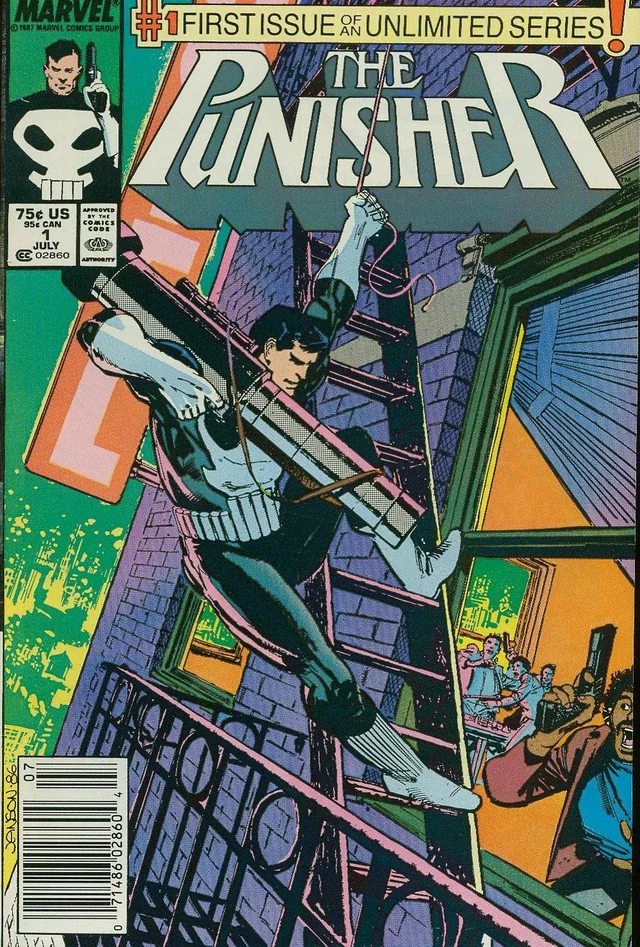Dark Age Milestones Part 1
tldr; For purposes of this series I define the Dark Age of Comic Books as running from 1985 with the publication of Crisis on Infinite Earths # 8, the death of Barry Allen, to 2000 with the publication of Ultimate Spiderman # 1. But we’ll be looking at a number of things that fall outside this date range as we explore the history of the Dark Age. And I reserve the right to change my mind about what the Dark Age was as I work.
I can’t say for certain when the Dark Age of Comic Books began or when it ended. It’s hard to say for certain when any “age” of comics begins or ends.
Did the Golden Age start with Action Comics # 1, or did it start with Famous Funnies or New Fun? Did the Golden Age end at the beginning of the Silver Age, which is defined as starting with Showcase # 4 IN 1956, or did it end with the end of World War II? Or maybe with the introduction of the Comics Code Authority in 1954? Did the Bronze Age start with Green Lantern/Green Arrow series in 1970, or the non-Code approved Amazing Spiderman # 96 in 1971, or issue 121 with the death of Gwen Stacy in 1973?
These “Ages” are rather porous as categories. An “Age” will often peak years after its beginning and will have predecessors and portents in the age before. The Golden Age started, at the latest, in 1938, but it was during WWII that it peaked. Mandrake the Magician and The Clock were predecessors to Superman and Batman, for example.
There can also be parallel tracks. Would we really think of the Underground Comix movement as part of the “Silver Age”? It seems rather to be its own age, much like we might think of the growing kids and YA graphic novel market to be its own thing within whatever we call the modern age. Likewise, comic books evolved along different tracks in the UK, Europe, Japan, South Korea, and elsewhere outside of North America.
A few definitions of the Dark Age/Copper Age of Comic Books
With that out of the way, let’s take a look at some definitions of The Dark Age, which is often also referred to as the Copper Age:
- In his book Supergods, Grant Morrison skips the Bronze Age and has the Dark Age starting with Green Lantern/Green Arrow. His framework has the Renaissance following the Dark Age, starting with his own Flex Mentallo or possibly The Authority.
- League of Comic Geeks uses the term Copper Age instead of Dark Age, and places it from 1986 to 1999, followed by the Plastic Age.
- CGC defines the Bronze Age as 1970–1984, the Copper Age as 1985–1991, and the Modern Age from 1992 to present.
- Wikipedia defines the Modern Age/Dark Age as 1985 to present.
- Historian Jess Nevins defines the Modern Age as 1986–2001, followed by the Metamodern age (2001–2015), and the Age of Chaos (2015 — Present).
I’m not comfortable with the idea that the “Modern Age” extends from 1992 to present as the CGC suggests, let alone having it extend all the way from 1985 to present as Wikipedia suggests. Comic books have changed a lot since the 1990s, and even since the 00s. I kind of like the idea of extending the Bronze Age up to around 1990 and starting the “Chromium Age” with the publication of of adjective-less Spiderman # 1. But ultimately I’m more convinced that the irrational exuberance of the 1990s is a natural extension of the trends of the 1980s, while the “Back to Basics” movement of the late 1990s and early 2000s represents a cleaner break with Dark Age aesthetics and storytelling.
That leaves me in partial agreement with the League of Comic Book Geeks definition of the Copper Age. But I use “Dark Age” because that’s what I’m used to calling it, and I think it’s more appropriate to begin the Dark Age in 1985 with the publication of Crisis on Infinite Earths, specifically issue 8: the death of Barry Allen. Barry Allen’s first appearance ushered in the Silver Age and the beginning of DC’s Silver Age universe. It’s only fitting that his death, and the beginning of a new DC universe continuity, would mark the beginning of another era.
What sets the Dark Age apart from the Bronze Age?

The shift from the Bronze Age to the Dark Age or Copper age is tricky to pin-down because the Bronze Age was already characterized by many of the same things that we association with the Dark Age:
- A shift towards darker, more mature, and more socially relevant stories.
- The rise of the direct market (comic book specialty stores).
- More publications marketed specifically towards collectors, such as character deaths and the launch of new series.
- New aesthetic standards set by artists like Neal Adams, John Byrne, and George Perez.
- Growing attention to creator rights and the rise of creator-owned and self-published titles.
But there are a few things that distinguish the Dark Age:
- Even darker stories, to the point that the “Suggested for Mature Readers” label came into being.
- More anti-heroes. Punisher first appeared in the Bronze Age, but as a villain. He got his own solo series in the Dark Age.
- More diverse artistic styles with less emphasis on “house style” aesthetics and more individual artistic styles, driven by the likes of Frank Miller, Bill Sienkiewicz, Michael Golden, Mike Zeck, Art Adams, and of course the Image founders.
- Speculator-driven (as opposed to reader or even collector driven) publishing models, along with gimmick covers and the resultant bubble economics.
- The rise of the trade paperback format.
- Creator ownership became more prevalent following the establishment of Image Comics.
When did the Dark Age of Comic Books end?
The end of the Dark Age is even trickier for me to pin-down. Mark Waid, Kurt Busiek, Alan Moore, and Morrison all pursued “Back to the Basics” approaches in the mid-90s (or earlier), but you can see plenty of Dark Age logic well into the 00s, for example the Marvel MAX line and DC’s Final Crisis event. But the launch of Marvel’s Ultimate line and the release of the original X-Men feature film in 2000 represent to me the most clear evidence of a new era.
We are probably now in yet another era. The League suggests the “Pixel Era” begins in 2020 with the pandemic. But others have suggested the end of the original Ultimate line in 2015 as the end of that particular era. I lean towards 2020, but for different reasons: Dan DiDio’s exit from DC and the company’s subsequent re-organization, followed by Ike Perlmutter’s exit from Marvel in 2023 and, eventually, the launch of the new Ultimate line and DC’s Absolute line. But that’s a debate for another time.
Next: The Twilight of the Bronze Age. We’ll take a look at some of the precursors to the Dark Age.


